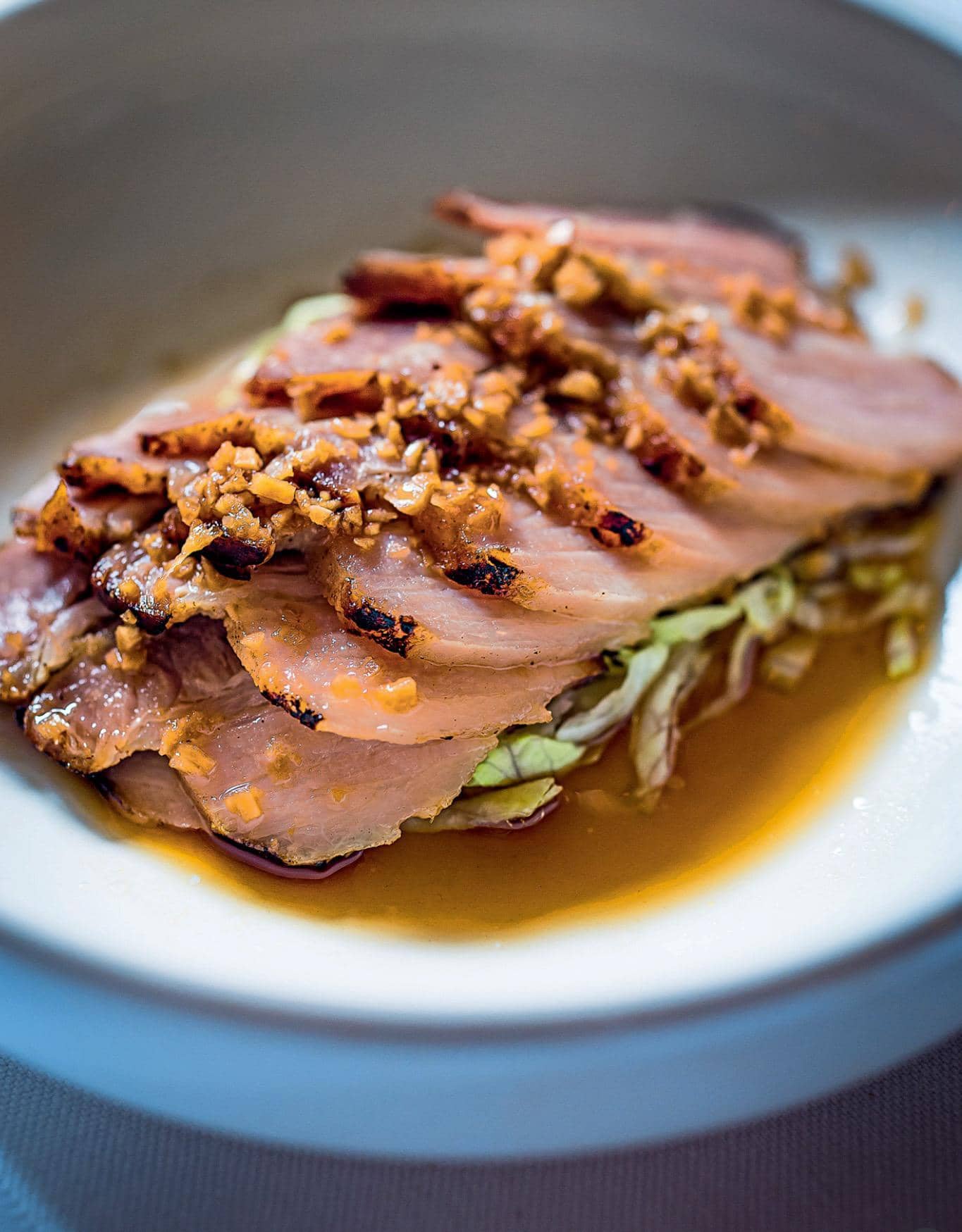Is there any culture, ethnic group or country that doesn’t have some sort of salted pork or beef dish; one that often sits front and centre? Religious dietary strictures aside, of course. And yes, I know the same process isn’t confined to simply just meat; both fish and vegetables are also stopped from the inevitable rot and decay, for use, sometimes months later, simply by the judicious — almost miraculous — application of salt, but they’re for another day. Today, today, it’s meat.
The Jewish religion prohibits the eating of pork (I’ve already thanked them for leaving more for those far more sensible ones amongst us) but their salt beef is — and excuse the rather obvious pun — “manna from heaven” — to this unbeliever.
It is a fine, fine way of taking advantage of a suitable piece of brisket, which is a (still) cheap, fatty and therefore hugely flavourful cut of meat (one that your Mum would have cannily used, to stretch the budget especially if there was — like ours — a large family involved), that is brined then cooked.
To make a suitable simple brine you’ll need about 2 litres of water. Add to that 200g of salt, 75g of sugar, (you can also add 15g of Prague Powder #1 if you want to keep the meat a more attractive pink rather than battleship grey tint), throw in a couple of bay leaves, a couple of crushed garlic cloves and 15g of ‘pickling spice’. You don’t need to buy this latter product — it can be made of pretty much any combination that takes your fancy — so, try a my suggested mix of a big knob of crushed ginger, a bunch of sliced coriander (stalks and all), a handful of juniper berries, mace, some allspice and a suitable amount of dried chillies but hey, go ahead, experiment.
Drop the brisket into a couple of tough, zip-sealable freezer bags (one inside the other for safety) and then pour in the brine whilst trying to exclude as much air as you can. Seal the bags over each other. Find a calm location in your fridge and then just leave it to do its thing — for at least 10 days, longer if you like — but remember to rotate the bags daily.
When you decide you’re about ready to cook it the beef, decant the joint, rinse it off, pat it dry.
The next step is dead simple: find a suitable lidded pot, add any aromatics you like, cover with water and then simmer — on a low heat — for anything up to 4 hours, making sure you top up the water as it evaporates, to ensure the meat stays underwater and doesn’t dry out. You’ll know it’s reached perfection when you can run it through with a skewer. Take it out, slice it into generous slices.
And thus we get to finally make the — tadaaaaa! — Reuben sandwich; the very pinnacle of salt-beef consumption.
This has to be served on rye bread, accept no substitutes. Cover two slices of rye with a thick layer of Thousand Island dressing. On one piece of bread, pile up as large a mound of beef as your little heart desires, add a layer of sauerkraut over the top of the beef and then complete the dish by placing at least three slices of Emmental cheese on top of all that goodness. Press down to make sure it stays together and then put it under a hot grill until the cheese starts dripping off the side. Slap the other slice on top to make the dish complete. Eat. Slowly. With a pickle or two. Feel that the world is good, at least for a few minutes.

Or, in some cases, a dish comes about because of the religion i.e in Chinese culture, salted pork is a Hakka-style dish that originated from their tradition of praying to spirits. For each spirit prayed to, another new piece of meat had to be offered up in appeasement and as a result, families found themselves with way more meat than they could eat in one sitting. Sensibly — rather than throwing it away — salt curing the meat meant it could be stored and eaten in the coming months.
This recipe comes via “Hunan: A Lifetime of Secrets from Mr Peng’s Chinese Kitchen” and makes 4 portions
200g belly pork
For the rub:
¼ tbsp crushed Sichuan peppercorns
½ tbsp salt
1 garlic clove, crushed
¼ tsp sesame oil
For the dressing:
1 garlic clove, finely sliced
½ tbsp white wine vinegar
pinch of sugar
To serve:
shredded lettuce
Cut the pork belly into 5 cm-wide lengths.
For the rub, mix the peppercorns, salt and garlic together in a bowl, then add the sesame oil and combine well. Rub the mixture into and all over the pork and then leave the meat to rest in the rub overnight. The next day, heat a griddle pan and cook the sides of the pork only (not the skin or the meat) on a medium heat without adding oil.
When the sides are crispy, the pork should be cooked through.
Mix all the ingredients for the dressing together in a bowl and adjust seasoning to taste.
When the meat is ready, cut the pork into thin slices. Allow 2 or 3 slices per portion and serve on top of a bed of shredded lettuce and drizzle with the dressing.
 .
.